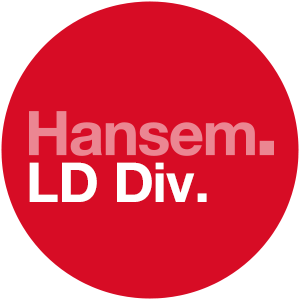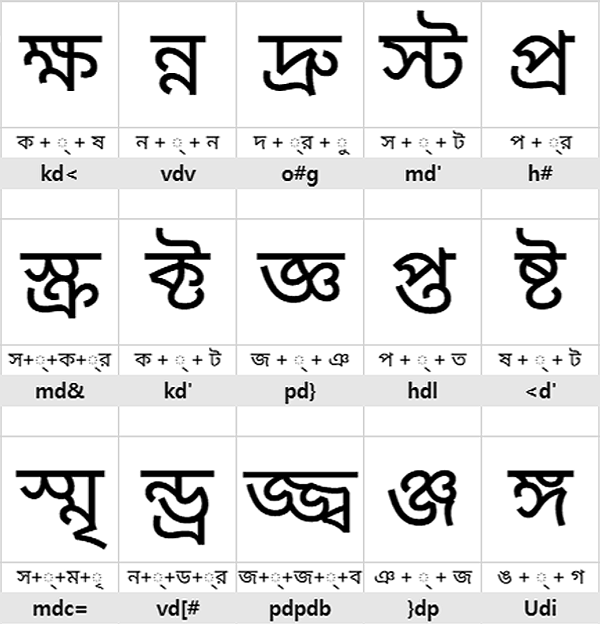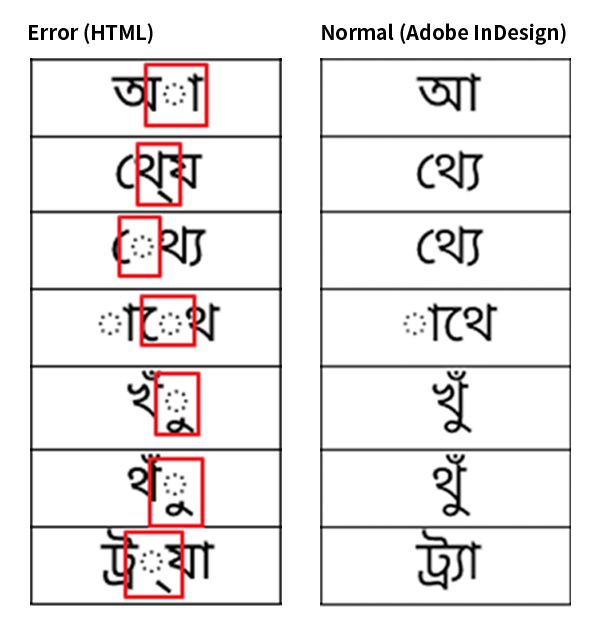

Localization


In managing desktop publishing for over 50 languages, we encountered various unexpected challenges like character corruption without a thorough grasp of the distinct script systems of each foreign language. To tackle these issues, our Hansem Global Language Localization Team has invested considerable effort in identifying these problems, deciphering their causes, and developing solutions. We are eager to share our strategies and methodologies.
This article centers on Bengali publishing. Bengali, Bangladesh’s official language, features intricate blends of consonants and vowels. The complexity of this language stems not just from its unique character combinations, which aren’t readily available on standard keyboards, but also from how it interacts with various electronic editing tools and platforms. The purpose of this blog is to offer insights into the character display problems encountered in Bengali and to suggest strategies for addressing these challenges.
1. Bengali Characters
Bengali employs a unique script, in which fundamental vowels merge to form words. This language also includes a wide variety of consonants, whose pronunciation is influenced by their pairing with vowels. Owing to the distinctive nature of the Bengali writing system, which is different from a conventional alphabet, its pronunciation can vary significantly from that of English.

2. Combination of Bengali Characters
Inputting Bengali text goes beyond just using the visible keys on the keyboard. It involves various combinations like vowel+vowel, vowel+consonant, among others, to produce the correct text input. As demonstrated, this process often requires pressing not just a single key, but a sequence of up to five or more keys to create the required combination.

Furthermore, it’s crucial to ensure accuracy from the initial stage of text combination, as the format of the text can change based on the keys pressed and the sequence of combinations used in different programs. For instance, characters that display properly in Adobe InDesign might appear distorted when presented in HTML format.

3. Diverse Composition of Bengali
Bengali text, primarily formed through various combinations and featuring complex structures, is often seen as a challenging language for those without extensive experience and specialized knowledge to input accurately.

1. Managing Fonts and Typefaces
Given that Bengali employs a unique script system, choosing and managing the right fonts and typefaces becomes essential. When creating and designing content, it’s important to use fonts that correctly render Bengali characters.
2. Arranging Text Layout
Bengali text layout may behave differently compared to other languages. It requires careful adjustments in letter spacing, line spacing, and other aspects to properly format Bengali text.
3. Streamlining with Automation and SW integration
Building on the point in “2. Combination of Bengali Characters,” where characters correctly rendered in Adobe InDesign might distort in HTML, introducing automation in converting these queries to XML and leveraging JavaScript can significantly optimize the workflow and conserve time. This approach not only facilitates the efficient resolution of character combination errors on a large scale but also ensures that Bengali content produced by Hansem Global is reliably and effortlessly distributed across multiple platforms. These platforms include various browsers, mobile web interfaces, web applications, and printed materials.
4. Support for Multiple Languages
In scenarios where Bengali content is used in conjunction with other languages, robust multilingual support becomes indispensable. Thus, publishing systems ought to include functionalities that cater to multiple languages, allowing for the efficient management and dissemination of content in various languages.
5. Compatibility to Web and Digital Platforms
It’s crucial for Bengali publishing technology to be compatible with diverse digital mediums, including websites, apps, and e-books. This technology needs to guarantee that Bengali content is displayed correctly across a range of platforms and devices.
Languages like Bengali can be tricky for computers. They require understanding not just the characters themselves, but also how fonts render them and how different programs handle the language.
At Hansem Global, we’ve developed cutting-edge publishing technology to tackle these complexities. We use advanced techniques like JavaScript to handle problematic character combinations and created a custom HTML converter with built-in logic.
This technology goes beyond simple translation. It specializes in converting data between different languages and programs, ensuring top-notch multilingual content. We achieve this through automation and rigorous quality checks, prioritizing factors like information searchability, user experience, readability, and of course, the actual language quality itself.
Hansem Global is an ISO Certified and globally recognized language service provider. Since 1990, Hansem Global has been a leading language service company in Asia and helping the world’s top companies to excel in the global marketplace. Thanks to the local production centers in Asia along with a solid global language network, Hansem Global offers a full list of major languages in the world. Contact us for your language needs!
 Transforming B2C Sales Training with Gamification
04.14.2024
Transforming B2C Sales Training with Gamification
04.14.2024
 The Impact of Localization on Salesforce’s Success with Hansem Global
04.07.2024
The Impact of Localization on Salesforce’s Success with Hansem Global
04.07.2024
 Mastering Right-to-Left (RTL) Language Localization: Avoid the Top 5 Desktop Publishing (DTP) Mistakes for Global Success
04.03.2024
Mastering Right-to-Left (RTL) Language Localization: Avoid the Top 5 Desktop Publishing (DTP) Mistakes for Global Success
04.03.2024